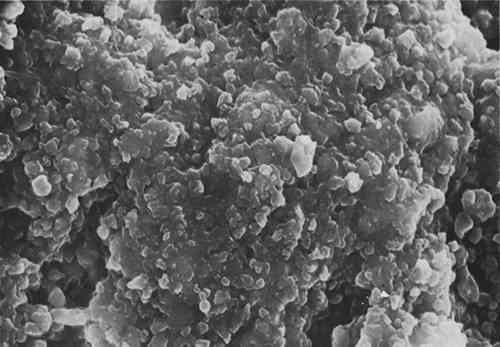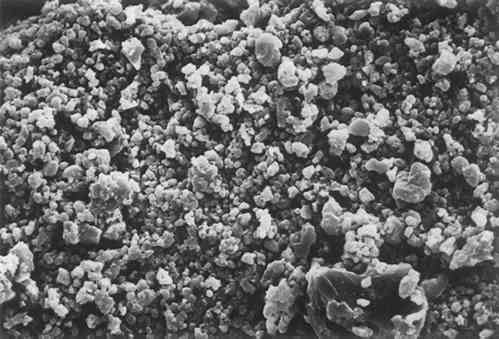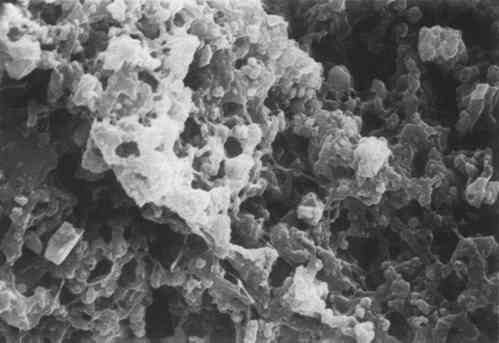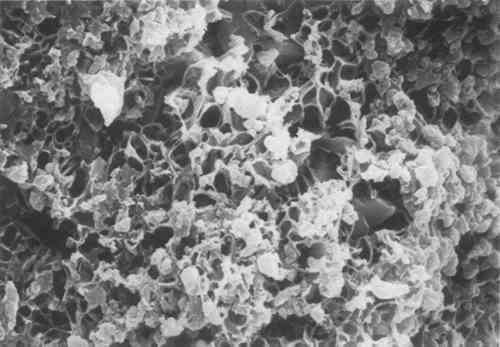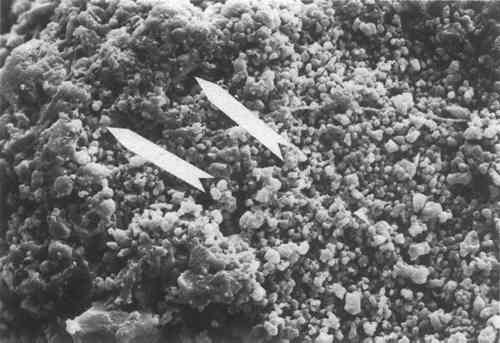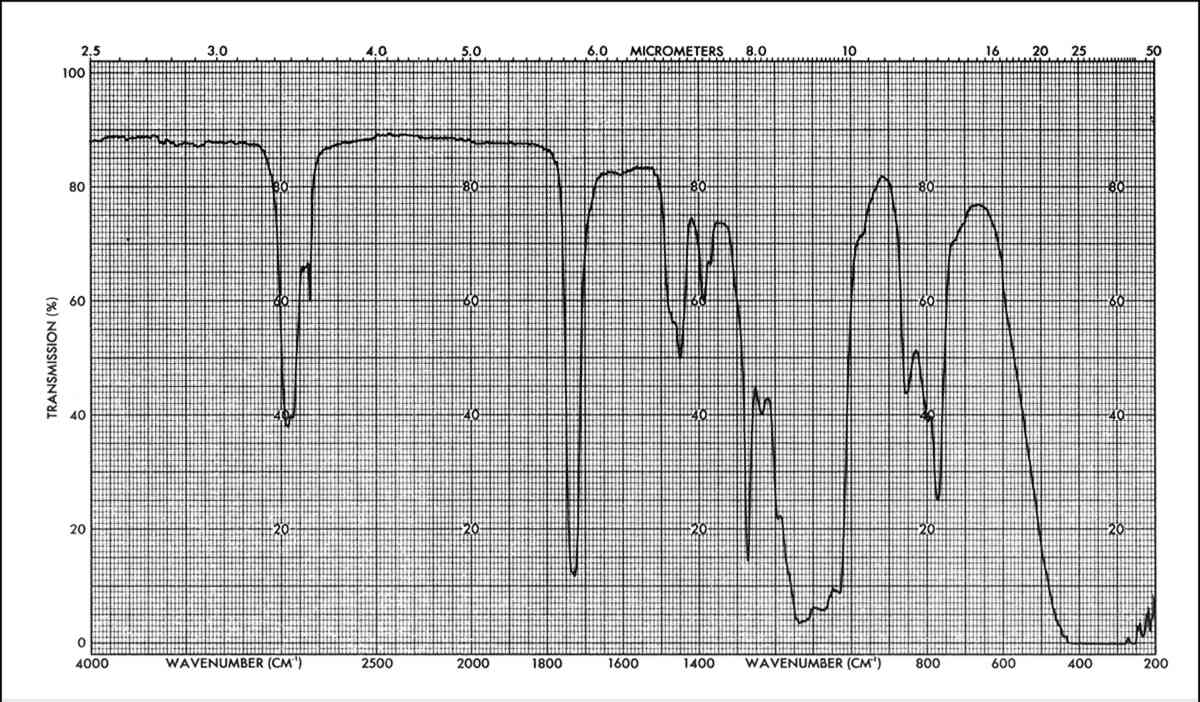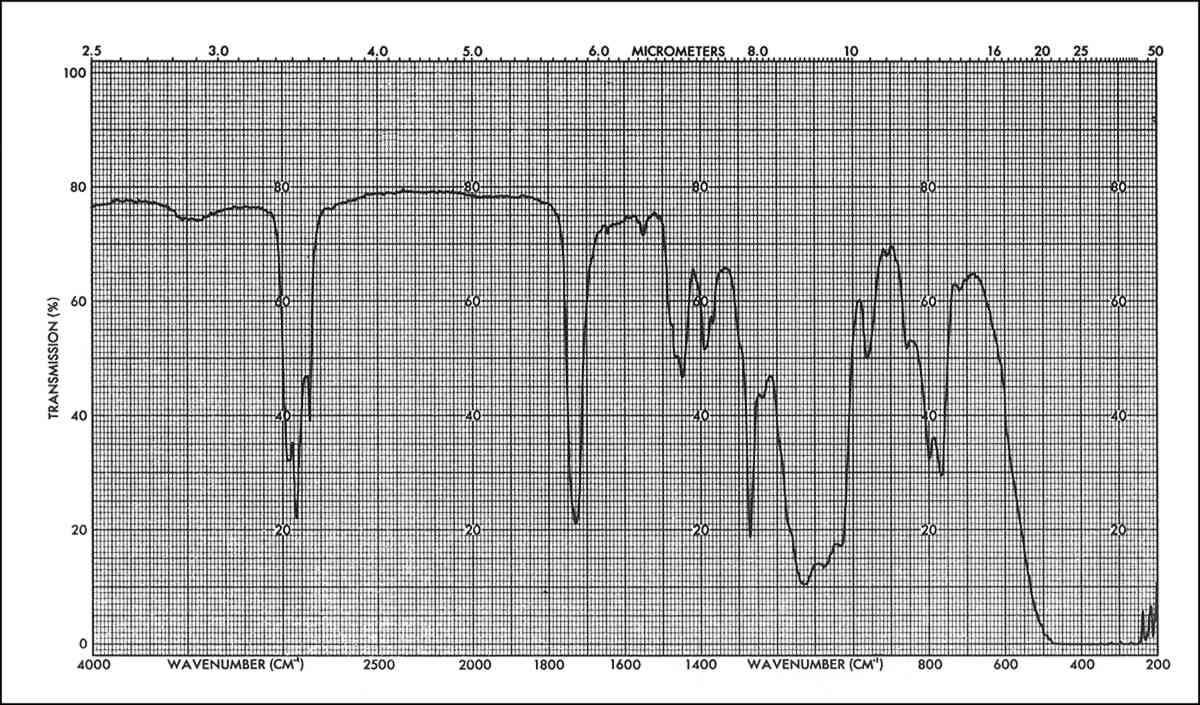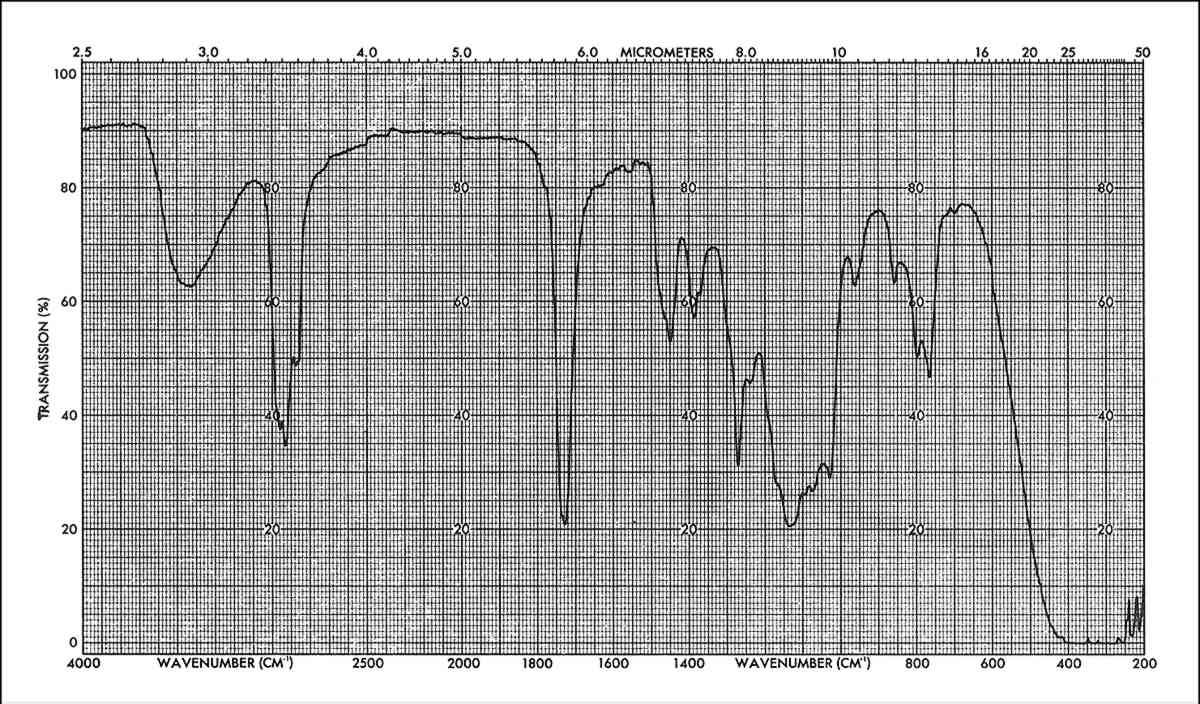ON THE REVERSIBILITY OF TREATMENTS WITH ACRYLIC/SILICONE RESIN MIXTURESA.E. Charola, A. Tucci, & R.J. Koestler
3 RESULTS AND DISCUSSIONSEM EXAMINATION OF specimens of Indiana and Vicenza limestone showed that there were no differences between the two with respect to the results obtained. Also, the IR spectra of the residues obtained from the poultices and/or immersion of the samples were similar regardless of the limestone from which they had been extracted. The illustration of the data for the discussion will therefore be carried out from specimens of Vicenza limestone. Figure 1 shows the appearance of a specimen of Vicenza limestone after treatment with the resin mixture. The treatment is uniform and covers all of the limestone grains. For comparison, the appearance of an untreated limestone is similar to that shown in Figure 5. The appearance of the treated sample does not change, even after one year, in specimens that are kept in the laboratory.
After ageing the specimens in a weathering chamber, the microscopic appearance of the mixture changes significantly, as can be seen in Figure 2. The network of resin formed is more evident because of the acid attack which dissolved some surface grains.
If this sample is then poulticed, the network that remains is much more
The appearance of an unweathered specimen after poulticing is shown in Figure 4. Some residues of the resin are still visible, but most have been removed. This is the appearance on the poulticed face. On side faces, the appearance is intermediate between that of Figures 1 and 4. Figure 5 shows another unweathered specimen after total immersion in the solvent mixture. The appearance is equivalent to one of an untreated specimen, indicating that the resin has been removed entirely.
The IR data show that the spectra obtained after total immersion or poulticing of the unweathered specimens are fairly similar to that of the original spectrum of the applied mixture, as shown in Figures 6 and 7. The main difference can be seen in the appearance of the 960 cm−1 peak (corresponding to C-H out of plane bending and/or CH2 rocking), in the relative change of intensities of the C-H stretching bands (around 2900 cm−1) and also with respect to the carbonyl peak (1725 cm−1) and in the relative change of intensities of the three peaks around 800 cm−1. These changes suggest that not all material has been extracted (a partition of different molecular weight polymers can occur in the stone) and/or that some interaction between the components of the mixture has occurred.
Spectra of the solvent extracts from immersion of weathered specimens is similar to the immersion spectra of unweathered specimens. On the other hand, the resin extracted by poulticing a weathered specimen, Figure 8 is remarkably changed. The main difference is in the relative intensities of the peaks corresponding to the B72 and the DF104; for example, the distortion of the Si-O-Si band at 1050–1150 cm−1 by the influence of the B72 doublet at 1150 cm−1 (corresponding to the C-O-C stretching of the -COOC- group and the C-Ostretching of the -O-CHz-). This indicates that in this case the proportion of B72 to DF104 has changed with respect to the original composition. By calibration with standard mixtures of these two components it was found that the extracted mixture had a composition of about 9:3.5::B72:DF104 while the original mixture applied had a composition of 9:7::B72:DF104. That is, the amount of DF104 in the extracted mixture, after weathering, was half that of the original application.
This change in composition can be explained by the continued polymerization of the silicone resin DF104 through the catalyzing action of the acid rain.11,12 This in-situ polymerization renders this resin more insoluble in solvents. That the solution extracted by immersion from a weathered specimen should be similar to that obtained from an unweathered specimen can be explained by the fact that the in-situ polymerization occurs only on the very surface of the stone.12 When the resin mixture is extracted from the whole specimen, the bulk of this mixture will have the original composition. |
